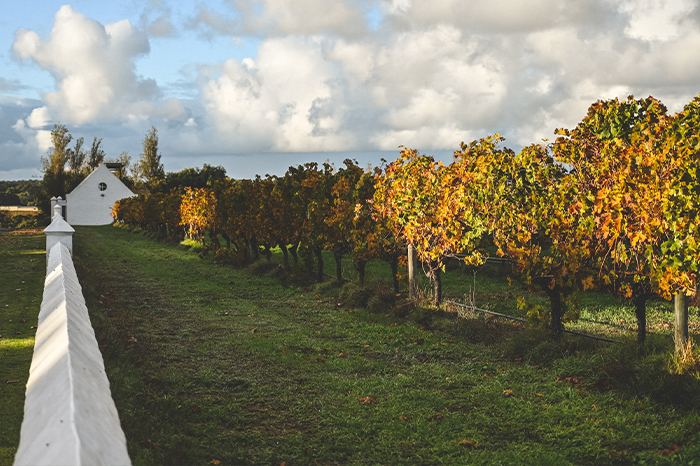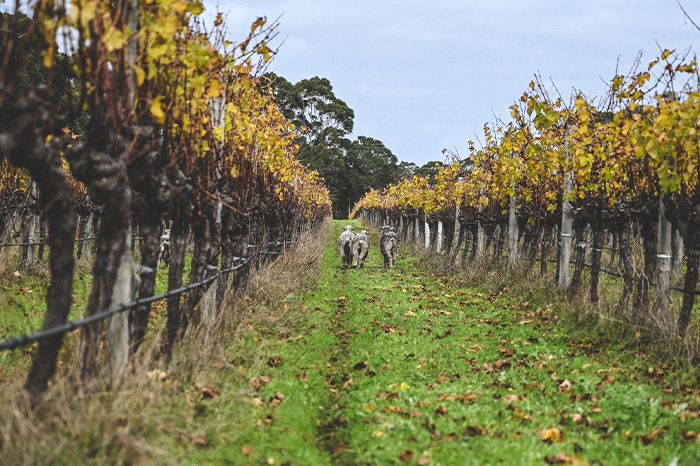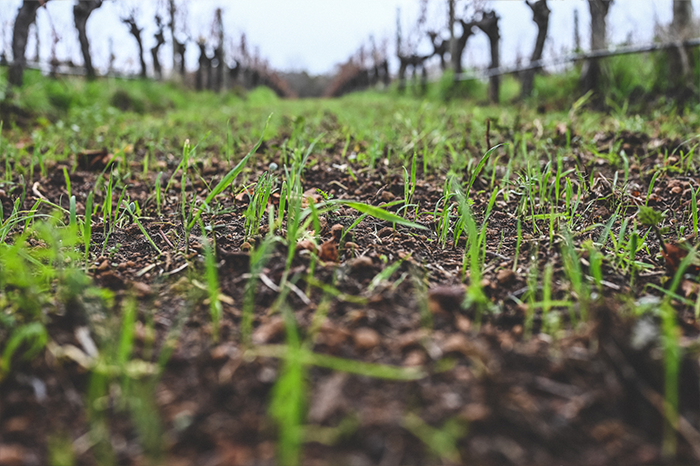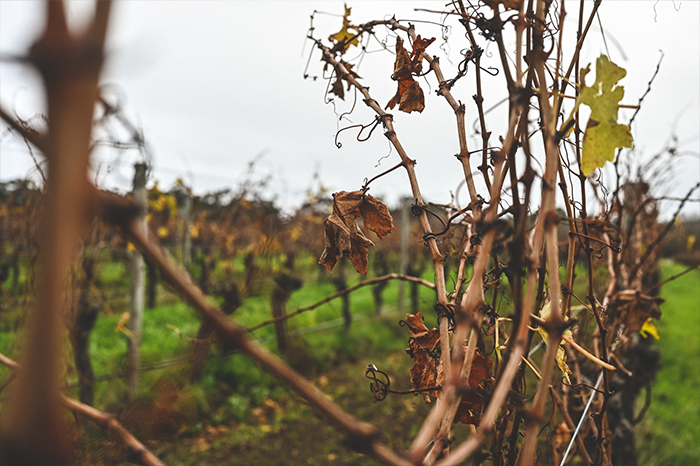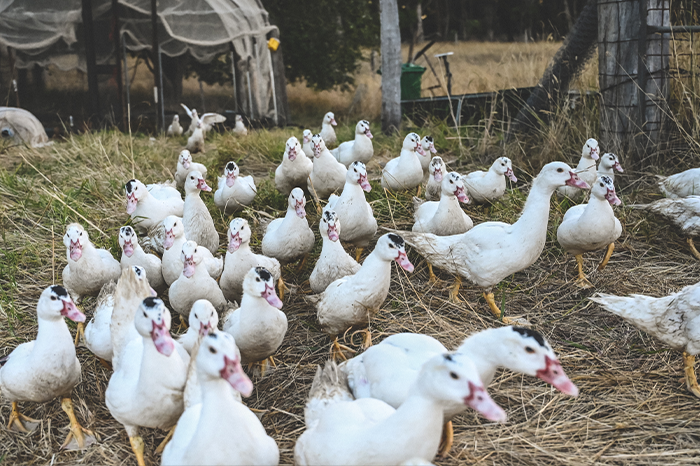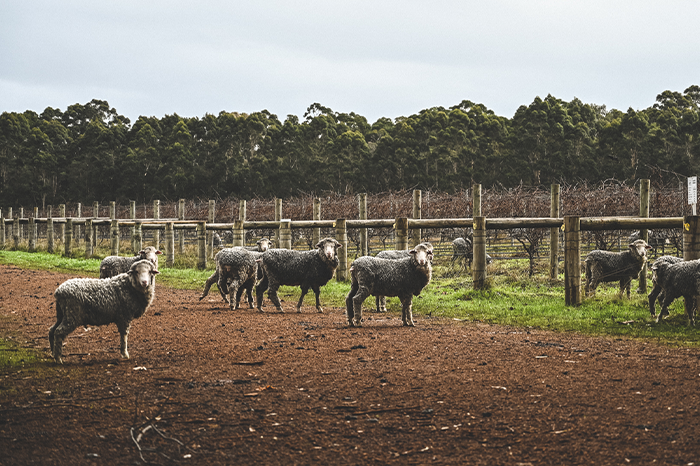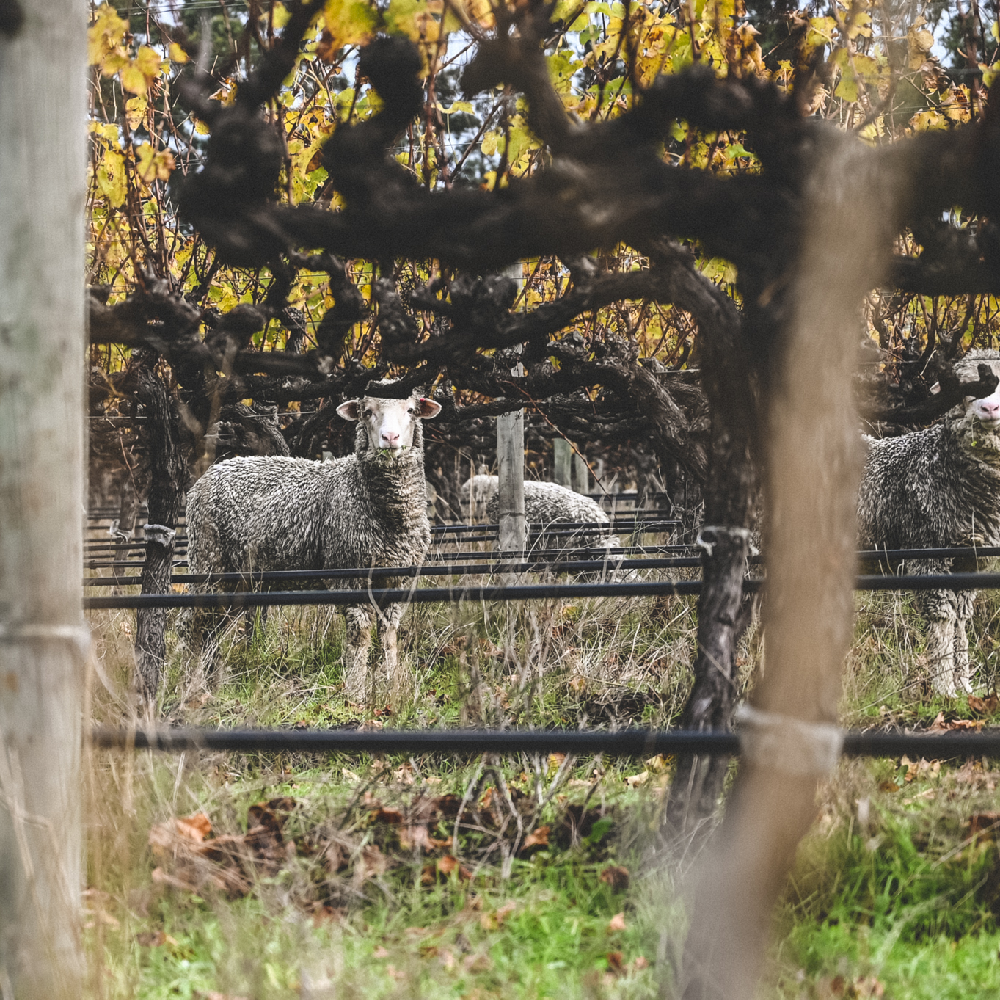WINTER WORK
Winter is here, and whilst the vines may be hibernating, our vineyard team are hard at work, replenishing the land after a busy growing season.
The cooler months following harvest are vitally important, both to lay the foundation for new growth and to build life back into our soils, so they remain nutrient-rich and healthy for generations to come.
During this time, the team give back to the land in many ways. Creating our own organic compost involves utilising waste from the winery, gardens and vineyard, and baking it to perfection, turning the material into big mounds of nutrient-rich dirt to put back on the vineyard floor. It’s a symbiotic relationship, whereby the compost feeds the soil organisms, keeping the complex network of roots underneath the ground healthy and happy.
Another important activity post-harvest is the seeding of cover crops. Being a certified organic vineyard means we can’t use herbicides to control the weed population, so the team plant smaller, more beneficial crops to hopefully outcompete the weeds and add diversity to the vineyard floor.
Cover crops are the organic way to create ‘green manure’ – a mix of spring green growth containing nitrogen, carbon and micronutrients, that over time decomposes and feeds back into the mid-rows of the vines. The presence of cover crops also creates precious biodiversity in the vineyard, encouraging more habitats for beneficial bugs and birdlife.
At this time of year, you’ll often see our flock of resident lawnmowers loose in the vines, keeping the weeds at bay. As they wander over the vineyard floor, they also help bury the seed of the cover crops into the earth with their hooves. Not to mention, their droppings provide free fertiliser! It’s a much gentler way to nurture our fragile soils during the wet winter months, rather than using heavy machinery.
As well as our sheep, we also have our own family of ducks on the Estate. Currently they are eating up all the snails in the vineyards surrounding their enclosure. They are so good at it; no other forms of snail control are needed.
Following a successful breeding season (which saw several team members hatching and rearing the babies in their own backyards!) the flock size is now sitting at between 50 and 60 ducks, with plans for another round of breeding this spring. Amazingly, the ducks reared by our Vineyard Manager Glen Ryan (aka ‘Duck Dad’) still know him and follow him around, even after being reintroduced into the larger population! Once the mob is large enough, the team will deploy their snail-eating skills on other areas of the property.
All this vineyard care is a precursor to pruning, which usually happens from July to September, once the vines have gone into their ‘deep sleep’. As the weather grows colder and more unpredictable, our crew of pruners don their wet weather gear, often storm watching and dodging the occasional hail event, to complete the work.
Two techniques are used. Spur pruning uses one or two pairs of existing permanent, old wood canes (cordons). Each year, any new shoots that have lignified (turned rigid or woody) along the permanent cordon are cut back to just two small buds on each cane, known as spurs.
Cane pruning selects two to four young, lignified canes from the previous season and trains them along a trellis wire. The other canes are removed, and new shoots sprout from the buds on the selected canes in spring.
Whichever technique is chosen largely depends on the grape variety, vine strength and structure, and the end status of the fruit the team are trying to achieve. This crucial and labour-intensive work is what sets up the skeleton of the vine for next year’s harvest.
Even though the colder weather can be challenging at times, crisp winter temperatures help the vines achieve full dormancy, resulting in a cleaner and more even budburst. An even budburst leads to better canopy growth and ultimately, fruit yield come springtime!
